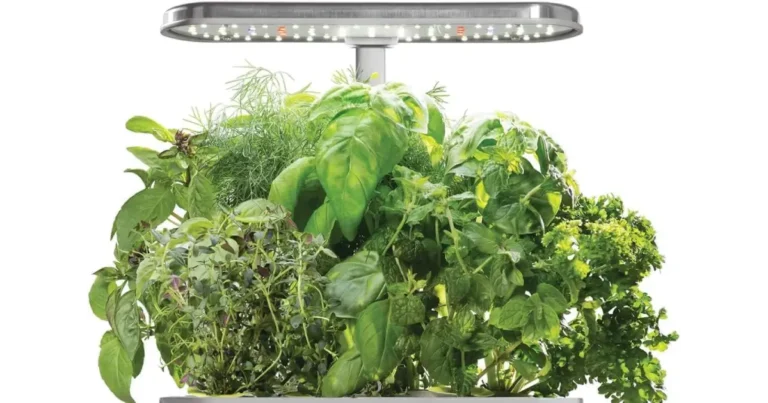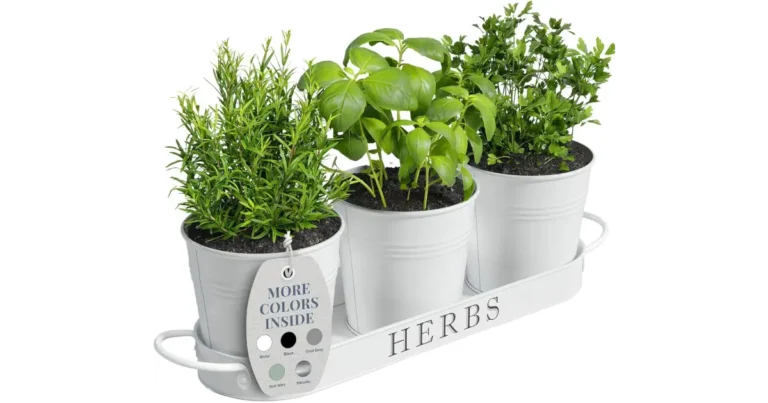How to Grow Fresh Herbs in Your Kitchen
There’s nothing quite like the flavor and aroma of fresh herbs in your cooking. Having a mini herb garden in your kitchen not only enhances your culinary experience but also adds a touch of greenery and freshness to your space. Whether you have a small apartment or a spacious home, growing herbs indoors is simple and rewarding. Here’s everything you need to know to start your own indoor herb garden.
-
Kitchen Herb Hydroponic Systems
Kitchen Herb Hydroponic Systems Growing Fresh Flavor Imagine snipping fresh basil or cilantro right from your countertop while cooking dinner. With a kitchen herb hydroponic system,…
-
Kitchen Self Watering Herb Planters
Kitchen Self Watering Herb Planters The Ultimate Convenience for Fresh Herbs in Your Kitchen Growing herbs in your kitchen just got easier with self-watering herb planters….
-
Kitchen Container Herb Garden Systems
Kitchen Container Herb Garden Systems Herb Container Garden in Your Kitchen with Traditional Soil-Based Methods Container gardening isn’t just for patios and balconies—it can thrive right…
Choosing the Right Herbs
Not all herbs thrive indoors, but many do exceptionally well with minimal care. Some of the best herbs to grow in your kitchen include:
- Basil – Great for Italian dishes, salads, and pestos.
- Parsley – A versatile herb perfect for garnishing and cooking.
- Cilantro – Essential for Mexican, Indian, and Asian cuisines.
- Thyme – A fragrant herb that complements a variety of dishes.
- Mint – Refreshing and ideal for teas, desserts, and cocktails.
- Chives – Adds a mild onion flavor to soups, eggs, and dips.
- Oregano – A staple for Mediterranean and pizza recipes.
- Rosemary – Robust and aromatic, excellent for roasting meats and vegetables.
Setting Up Your Indoor Herb Garden
To create a thriving herb garden in your kitchen, follow these essential steps:
1. Find the Perfect Spot
Herbs need at least 6 hours of sunlight per day. A sunny windowsill facing south or west is ideal. If natural light is limited, consider using grow lights to supplement the light source.
2. Choose the Right Containers
Select pots with drainage holes to prevent overwatering. Small to medium-sized pots work well for herbs, and you can use decorative containers to match your kitchen’s aesthetic.
3. Use Quality Soil
Herbs thrive in well-draining potting soil. Look for light, organic potting mix that provides good aeration and moisture retention.
4. Watering and Maintenance
- Water your herbs when the top inch of soil feels dry. Overwatering can lead to root rot.
- Mist herbs occasionally to maintain humidity, especially in dry climates.
- Trim your herbs regularly to encourage growth and prevent them from becoming leggy.
5. Feeding Your Herbs
Use a balanced liquid fertilizer every few weeks to keep your herbs healthy. Organic compost tea or diluted fish emulsion also work as excellent natural fertilizers.
Harvesting Your Herbs
Regularly snipping leaves encourages growth. Here are some tips for harvesting:
- Always cut above a leaf node to promote bushy growth.
- Never remove more than one-third of the plant at a time.
- Use fresh herbs immediately or store them in a damp paper towel in the refrigerator.
Troubleshooting Common Issues
- Yellowing Leaves – Often caused by overwatering; let the soil dry out before watering again.
- Leggy Growth – Indicates a lack of sunlight; move the plant to a sunnier spot or use grow lights.
- Pests (Aphids, Spider Mites) – Rinse leaves with soapy water or use neem oil to keep pests at bay.
Enjoying Your Fresh Herbs
Once you have a thriving indoor herb garden, enjoy adding fresh flavors to your dishes! Whether it’s a handful of basil for a homemade pizza or fresh mint for a mojito, having herbs at your fingertips elevates your cooking effortlessly.




